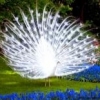Defining "aging" (and thus thereby also defining "anti-aging") can be a tricky problem. Attempting to reduce it down to one particular manifestation or biomarker (particularly macroscopic phenomena, such as grey hair) is questionable and fraught with both scientific and philosophical difficulties.I see gray hair as just a symptom of aging so I am hoping that the reversal of gray hair would be a definitive indication of anti-aging effects. I'm more interested in evidence of protocols/regimens reversing *aging* rather than a topical regimen that is focused on the gray hair itself.
As far as I'm aware, grey hair is currently considered nothing more than a cosmetic issue with no further health implications per se. It might be categorised as a form of "social aging", in that it is simply associated in the minds of most people, with older chronological age, and thus its main impact is in the social rather than biological realm.
A possibly analogous situation would be the simplistic view that dwarves are chronologically young, since a small body is closely associated with children in the minds of most.
In the following study, neither grey hair, wrinkles or baldness were associated with increased mortality, so reversal of grey hair may not be a marker of widescale anti-aging:
1. J Gerontol A Biol Sci Med Sci. 1998 Sep;53(5):M347-50.
Longevity and gray hair, baldness, facial wrinkles, and arcus senilis in 13,000
men and women: the Copenhagen City Heart Study.
Schnohr P(1), Nyboe J, Lange P, Jensen G.
Author information:
(1)Epidemiological Research Unit, National University Hospital, Copenhagen, Denmark.
PeterSchnohr@dadlnet.dk
BACKGROUND: We have previously reported that men who look older than their
contemporaries have a significantly higher risk for myocardial infarction. The
purpose of this study was to investigate whether persons with pronounced aging
signs such as graying of hair, baldness, or facial wrinkles are prone to a
shorter life span compared to their contemporaries.
METHODS: In the Copenhagen City Heart Study comprising a random sample of 20,000
men and women, we also recorded, in addition to cardiovascular risk factors, data
on signs of aging: extent of gray hair, baldness, facial wrinkles, and arcus
senilis (corneal arcus). During 16 years of follow-up, 3,939 persons (1,656 women
and 2,283 men) had died. The Cox regression model for proportional hazards, which
included age as an explanatory variable, was used for descriptive analysis of the
correlation between these aging signs and all-cause mortality.
RESULTS: We found no correlation between the mortality and the extent of graying
of the hair, or baldness or facial wrinkles in either of the sexes, irrespective
of age. A single exception was observed in a small subgroup of men with no gray
hair. They had a slightly, but significantly, lower mortality than the rest
[relative risk (RR) = .81, 95% confidence interval (CI) .67-.98; p < .05]. The
presence of arcus senilis was significantly correlated with a shorter life span
in women (RR = 1.25, 95% CI 1.08-1.46; p < .01). For men the same tendency was
found, but the correlation was not statistically significant.
CONCLUSION: We conclude that the degrees of graying of the hair, baldness, and
facial wrinkles are not predictive of a shorter life span in men and women in the
Copenhagen City Heart Study.
PMID: 9754140 [PubMed - indexed for MEDLINE]
http://www.ncbi.nlm....act&format=text
Scientific results can be counter-intuitive and contradictory to "common sense." It's possible that the common sense idea of connecting grey hair with the biological decline of aging may prove to be just such an error. The following study suggests, counter-intuitivel that (in wild boars) maintaining production of the pigment necessary for non-grey hair depletes a powerful intracellular antioxidant (glutathione.) Thus those boars with grey hair were less susceptible to oxidative stress than boars with coloured hair. Maybe greying hair is actually a good thing if it involves limited antioxidants being routed to defend more important areas of the body rather than being expended on mere hair pigmentation:
"...Most of the pigment in animal skin and hair is produced by chemicals called melanins. There are two kinds of melanins: eumelanin, which produces dark colors, and pheomelanin, which produces reddish or chestnut colors...production of pheomelanin consumes a chemical called glutathione (also known as GSH), which is a powerful intracellular antioxidant...
...boars with the highest levels of pheomelanin in their hair tended to have lower levels of GSH in their muscles, and had the highest levels of oxidative stress...
...As with human hair, wild boars show hair graying all across their body fur, Galván said. But we found that boars showing hair graying were actually those in prime condition and with the lowest levels of oxidative damage. Far from being a sign of age-related decline, hair graying seems to indicate good condition in wild boars...
...Given that all higher vertebrates, including humans, share the same types of melanins in skin, hair, and plumage, these results increase our scant current knowledge on the physiological consequences of pigmentation...
http://press.uchicag...7_RedBoars.html
Edited by Brett Black, 10 June 2014 - 04:18 AM.
























































